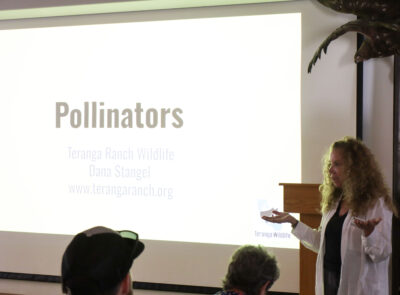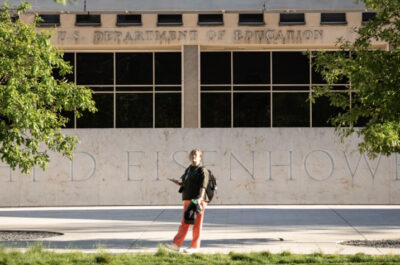Climate change is altering the real estate market. Rising energy costs and environmental pressures are encouraging businesses to reconsider how they build. Many developers face challenges in balancing sustainability, cost, and long-term benefits. Did you know buildings contribute nearly 40% of global carbon emissions? This highlights why sustainable development isn’t just an option—it’s essential. From renewable energy to environmentally friendly materials, the industry is advancing rapidly. This blog will focus on important trends shaping real estate’s greener future. You’ll discover practical insights that can help your projects succeed while remaining eco-conscious. Looking for ideas that are both sensible and cost-effective?
Renewable Energy Integration in Real Estate
Developers are incorporating renewable energy sources into properties to cut long-term expenses. This change decreases emissions and addresses the increasing need for clean energy options.
Solar panel installations
Solar panel installations have become a cornerstone of sustainable development. They offer real estate a dependable way to reduce energy costs and lower carbon footprints.
- Solar panels convert sunlight into electricity, helping properties minimize reliance on fossil fuels. This decreases operating expenses for property owners over time.
- Tax incentives such as the Federal Investment Tax Credit (ITC) make these investments more appealing. In 2023, this credit covers up to 30% of installation costs.
- Rooftop solar designs align effectively with modern buildings, maintaining aesthetics while producing clean energy. These features also attract environmentally conscious buyers or tenants.
- Energy generated can power residential devices, commercial lighting, or heating systems directly on-site. Excess energy can feed back into the grid, creating additional savings through net metering programs in many states.
- Dependable solar solutions enhance property values for investors focusing on eco-friendly construction projects or luxury real estate markets seeking green certifications like LEED.
- Maintenance needs are minimal after professional installation, offering long-term durability while reducing ongoing costs.
- Sustainable urban planning often includes solar-powered infrastructure as communities explore climate-resilient design strategies for new developments. Professional townhouse management services often implement these renewable energy solutions to help homeowners reduce costs and attract eco-conscious tenants.
This practical approach aligns well with rising tenant demand for energy-efficient advancements across industries like real estate investment and environmentally friendly construction projects.
Wind energy adoption
Wind power is gaining momentum in sustainable real estate. It reduces energy costs and aligns with climate goals.
- Install wind turbines on-site to capture clean energy for properties. They provide a steady supply of renewable electricity.
- Consider small-scale urban wind turbines for mixed-use developments. These systems work well in areas with consistent breezes.
- Explore vertical axis turbines for tight spaces or residential communities. They are quieter and blend into their surroundings better than traditional designs.
- Collaborate with nearby wind farms through power purchase agreements (PPAs). This ensures access to renewable energy without major upfront investments.
- Emphasize wind energy as part of your environmental reporting strategy. Buyers and investors value clear commitments to sustainability practices.
- Inform stakeholders by educating them about cost savings from wind adoption projects over time.
Wind solutions cut emissions while increasing the appeal of real estate investments.
Green Building Certifications
Green building certifications demonstrate dedication to responsible design and construction. They also help real estate projects distinguish themselves in a competitive market focused on sustainability.
LEED-certified developments
LEED certification encourages construction to adopt eco-friendly practices. It assesses buildings based on sustainability, energy efficiency, and indoor air quality. This internationally acknowledged system appeals to real estate investors committed to environmental responsibility.
“Buildings contribute to nearly 40% of global greenhouse gas emissions,” according to the U.S. Green Building Council (USGBC). LEED-certified projects address this by focusing on renewable resources and low-impact development strategies.
WELL Building Standard
The WELL Building Standard emphasizes designing healthier workspaces. It assesses buildings based on air quality, water purity, lighting design, and overall well-being. This certification supports environments that actively enhance employee health and efficiency.
Business owners can apply this standard to attract environmentally aware tenants. Features such as ergonomic designs or areas encouraging physical activity increase the attractiveness of real estate investments while aligning with sustainability objectives. For example, firms specializing in custom home construction in Bellevue frequently incorporate these sustainable practices to enhance both property value and buyer appeal.
Energy Efficiency in Construction
Builders now focus on smarter ways to reduce energy waste during construction. Every step counts when creating structures that breathe efficiency.
Passive design techniques
Designing properties to work with natural forces decreases energy consumption. Positioning buildings to follow the sun can increase daylight and minimize the need for artificial lighting. Allowing fresh air to pass through windows or vents cools spaces naturally.
Thicker walls, carefully placed awnings, and green roofs help control temperatures effectively. These approaches reduce dependence on HVAC systems while lowering expenses for owners over time.
High-performance insulation materials
High-performance insulation materials significantly reduce energy consumption in buildings. Spray foam, aerogels, and rigid foam panels prevent heat loss effectively. These materials maintain indoor comfort while easing the workload on HVAC systems.
Energy-conscious design with modern insulation reduces expenses over time. Business owners focusing on environmentally friendly construction comply with green building standards such as LEED certification more readily.
Use of Sustainable Materials
Developers now turn to materials that reduce environmental harm. These choices cut carbon emissions and promote responsible design in construction.
Recycled and reclaimed materials
Using recycled and reclaimed materials in real estate development promotes sustainability. It reduces waste, lowers costs, and appeals to eco-conscious investors.
- Reclaimed wood from older buildings or barns is repurposed into flooring, panels, or furniture. This adds character while reducing deforestation.
- Old bricks are cleaned and reused in modern construction, offering durability and charm with lower energy input compared to manufacturing new ones.
- Steel salvaged from demolitions retains its strength and versatility for structural purposes without compromising safety or quality standards.
- Recycled glass is crafted into countertops, tiles, or decorative features, creating visually appealing designs while reducing landfill use.
- Plastics are reprocessed to create insulation boards or composite decking materials that last longer than traditional options.
- Concrete rubble is used as aggregate for building roads and foundations, limiting the use of virgin sand and gravel resources.
- Scrap metal is melted down for pipes, beams, or reinforcements in energy-efficient design projects focused on green infrastructure goals.
Reusing materials isn’t just practical—it reflects a thoughtful approach to responsible design choices in real estate development today.
Low-carbon concrete
Recycled materials save resources, but low-carbon concrete advances efforts by reducing emissions. Traditional cement production contributes 8% of global CO2 emissions. Low-carbon alternatives combine industrial byproducts like fly ash or slag with reduced cement content. These blends significantly cut carbon outputs without compromising the structure.
This eco-friendly material aligns seamlessly with sustainable construction objectives. Developers can achieve green building standards while addressing climate risks. It is suitable for urban green spaces, high-rises, and even luxury real estate projects.
Smart Technologies for Sustainability
Smart technologies are changing how buildings conserve resources. They assist property owners in lowering energy expenses and minimizing environmental effects.
IoT solutions for energy monitoring
IoT solutions are reshaping energy monitoring in real estate. They help businesses cut costs and enhance energy efficiency.
- Devices like smart meters track real-time electricity, water, and gas usage. This data helps identify waste quickly.
- Sensors find inefficiencies in HVAC systems. These sensors prompt timely maintenance to reduce energy consumption.
- Automated lighting systems adjust brightness based on room occupancy. This saves power in unused spaces.
- IoT platforms provide detailed reports on energy use patterns over weeks or months. These insights help refine operations.
- Businesses can remotely oversee properties through IoT apps, preventing costly downtime due to unnoticed issues.
- AI-powered IoT tools forecast future energy needs based on historical data. This lowers operational costs and enhances building performance.
These technologies foster sustainable development while addressing climate risks effectively.
AI-powered energy management systems
AI-powered energy management systems are changing how buildings use and save energy. These technologies offer intelligent insights that help businesses cut costs and reduce carbon footprints.
- AI-based systems analyze energy usage patterns in real time, identifying inefficiencies quickly. This allows businesses to make data-informed decisions without delays.
- Automated controls adjust lighting, heating, or cooling based on building occupancy. These small changes add up to significant savings over time.
- Predictive analytics forecasts future energy demands using past data and weather conditions. Businesses can prepare better and plan for lower consumption during peak hours.
- Machine learning enhances equipment performance by detecting faults early on. Fixing problems faster prevents costly repairs and wasted energy.
- Flexible dashboards provide managers with clear visuals of consumption trends and savings achieved. Decision-making becomes easier when the data is visually straightforward.
These systems integrate effectively into broader green building strategies like passive design techniques covered next in this blog post.
Urban Planning for Sustainability
Cities are reconsidering layouts to harmonize practicality and ecology. Careful designs now focus on both community requirements and environmental well-being.
Mixed-use developments
Mixed-use developments combine homes, offices, and retail spaces. These designs reduce the need for long commutes, decreasing vehicle emissions. Businesses in these areas benefit from higher foot traffic and closeness to consumers.
These projects often feature green infrastructure like urban green spaces or eco-friendly landscaping. Thoughtful layouts make the best use of land while supporting sustainable urban planning goals. Such developments encourage walkability and enhance the quality of life for residents and tenants alike.
Green spaces and eco-friendly landscaping
Green spaces and eco-friendly landscaping are vital in sustainable urban planning. They not only enhance property value but also promote well-being and environmental health.
- Create rooftop gardens to make better use of unused spaces for greenery, helping reduce heat islands in urban areas.
- Install drought-resistant plants to conserve water while adding aesthetic appeal to real estate developments.
- Add walking trails or bike lanes surrounded by vegetation to support physical activity and eco-friendly commuting options.
- Incorporate native plant species that require less maintenance while supporting local wildlife habitats.
- Design rain gardens for effective stormwater management, reducing flooding risks during heavy rainfall periods.
Smart technologies can further improve energy efficiency efforts in your projects.
Tenant Demand for Sustainable Features
Tenants are increasingly drawn to properties that help them save on energy costs and reduce their environmental impact. Developers who focus on sustainability address this growing demand and maintain a competitive edge.
Energy-efficient appliances
Energy-efficient appliances reduce electricity costs and help meet green building goals. Upgrading to ENERGY STAR-rated devices can cut energy use by 10-50%. For instance, modern HVAC systems consume less power while maintaining comfort. Smart refrigerators and washers also reduce energy consumption without sacrificing performance.
Property owners investing in efficiency upgrades attract eco-conscious tenants. Lowering operational expenses increases a property’s appeal to real estate investors. These appliances align with responsible design practices while supporting climate risk management strategies.
Smart home technology
Smart home technology reduces energy waste by automating daily tasks. IoT devices allow property owners to monitor electricity, water use, and heating systems in real time. Sensors detect inefficiencies and suggest adjustments to cut costs.
AI-based systems can anticipate consumption patterns. They improve energy usage based on tenant behavior without manual input. These features meet tenant demand for sustainability while enhancing property value over time.
Conclusion
Sustainable real estate is reshaping the future. Developers now embrace renewable energy, efficient designs, and eco-friendly materials. Tenants are pushing for greener options too. These trends aren’t just helping the planet; they’re enhancing long-term investments. Building smarter today paves a more resilient tomorrow.






